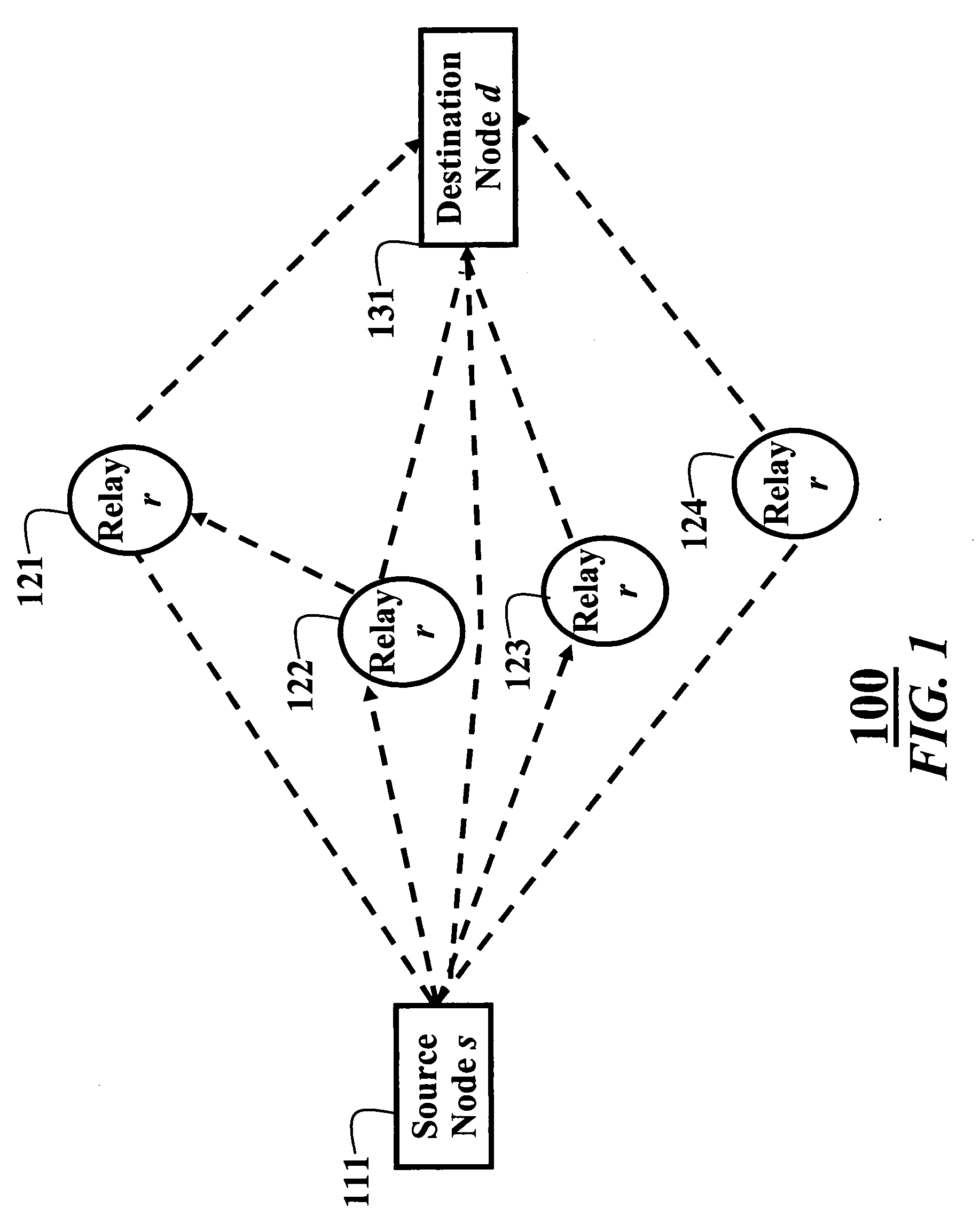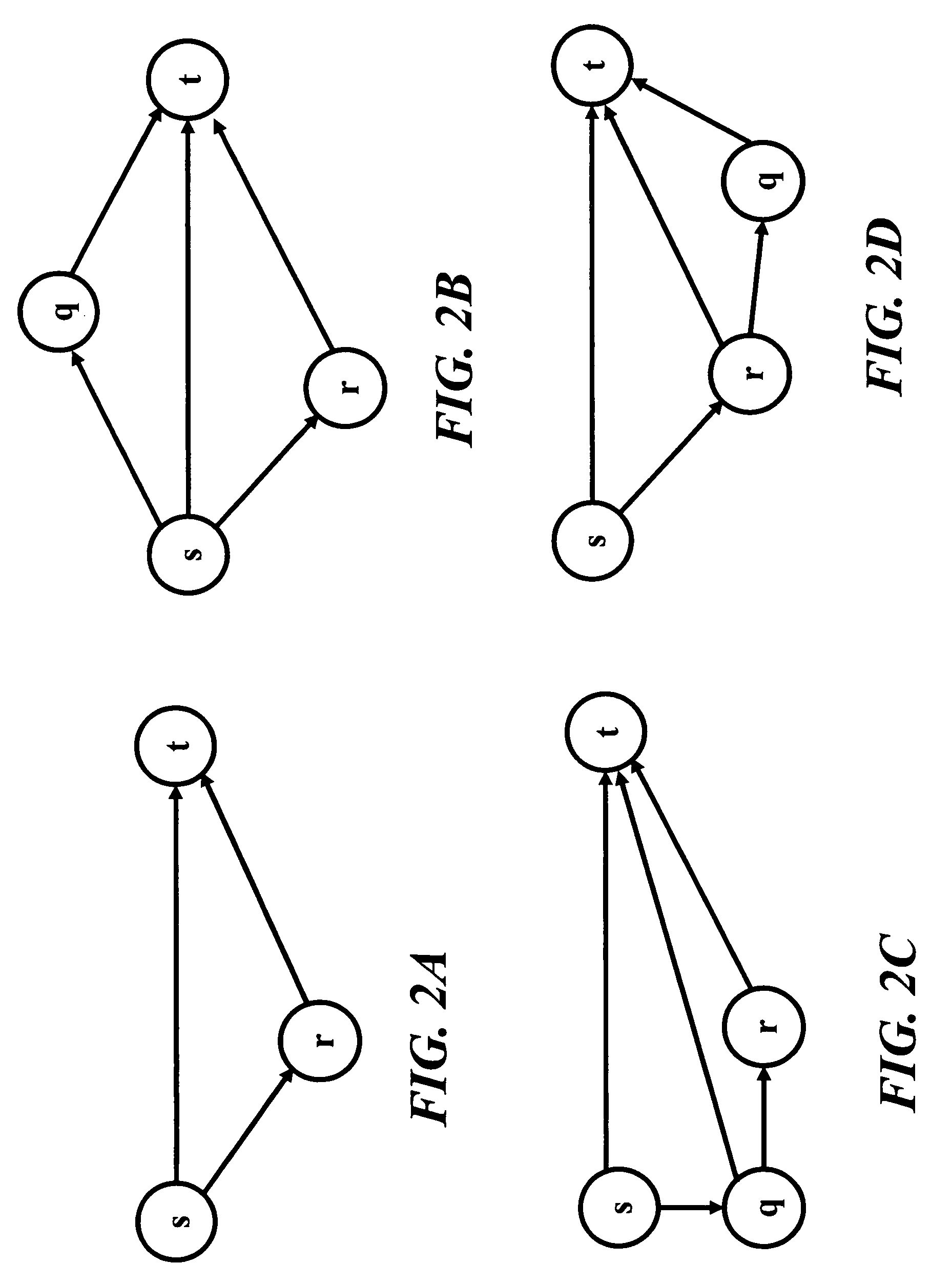Energy accumulation in destination nodes of wireless relay networks
a wireless relay and destination node technology, applied in data switching networks, error prevention/detection by transmission repeat, high-level techniques, etc., can solve the problems of consuming resources at each and every node, affecting the efficiency of wireless relay networks, and severely limited computation, memory and power resources in such nodes, so as to reduce the total energy consumption of the network, high probability, and efficient implementation
- Summary
- Abstract
- Description
- Claims
- Application Information
AI Technical Summary
Benefits of technology
Problems solved by technology
Method used
Image
Examples
Embodiment Construction
[0023]FIG. 1 shows a wireless relay network 100 according to an embodiment of our invention. The network includes a source node s 111, a destination node t 131, and one or more intermediate decode-and-forward relay nodes r 121-124. All nodes use unicast transmission via single omni-directional antennas for transmission and reception, and operate in half-duplex mode, i.e., the nodes can either transmit or receive, but not do both simultaneously. The network 100 is quasi-static, in which occasional link updates reflect possible changes of channel state information of channels of the network. The source can transmit directly to the destination, or indirectly via one or more relay nodes. The relay nodes can forward packets to the destination serially or in parallel.
[0024]Destination Energy Accumulation
[0025]The embodiments of the invention use destination energy accumulation (DEA). DEA fills the gap between the two known extremes, namely (i) a conventional ne...
PUM
 Login to View More
Login to View More Abstract
Description
Claims
Application Information
 Login to View More
Login to View More - R&D
- Intellectual Property
- Life Sciences
- Materials
- Tech Scout
- Unparalleled Data Quality
- Higher Quality Content
- 60% Fewer Hallucinations
Browse by: Latest US Patents, China's latest patents, Technical Efficacy Thesaurus, Application Domain, Technology Topic, Popular Technical Reports.
© 2025 PatSnap. All rights reserved.Legal|Privacy policy|Modern Slavery Act Transparency Statement|Sitemap|About US| Contact US: help@patsnap.com



